Global Partners for a Better HR Future






that your frontline employees use every workday, delightfully!


Our Clients
Globally recognized by
outstanding clients







Problem
01
Missing link between Employee’s skills
and the organizational KPIs cascaded to him/ her
02
UI/ UX is complicated
further by multiple screens & workflows such as goal set up, cascading, updation, feedback, IDPs, ratings, year end processes etc
03
Agility is low
as traditional PMSes are operated retrospectively for the year-end processes rather than for regular performance improvement
04
Data entry to PMS is onerous
especially if the Employee has to update the PMS in addition to updating the CRM/ ticketing/ operating software they already use
05
Good line Managers are not necessarily
good People Managers
and the traditional PMSes do not have inbuilt coaching modules
Solution
Individual Employee skills are interlinked to org KPIs
across Goals, Feedback, IDPs & year-end work flows
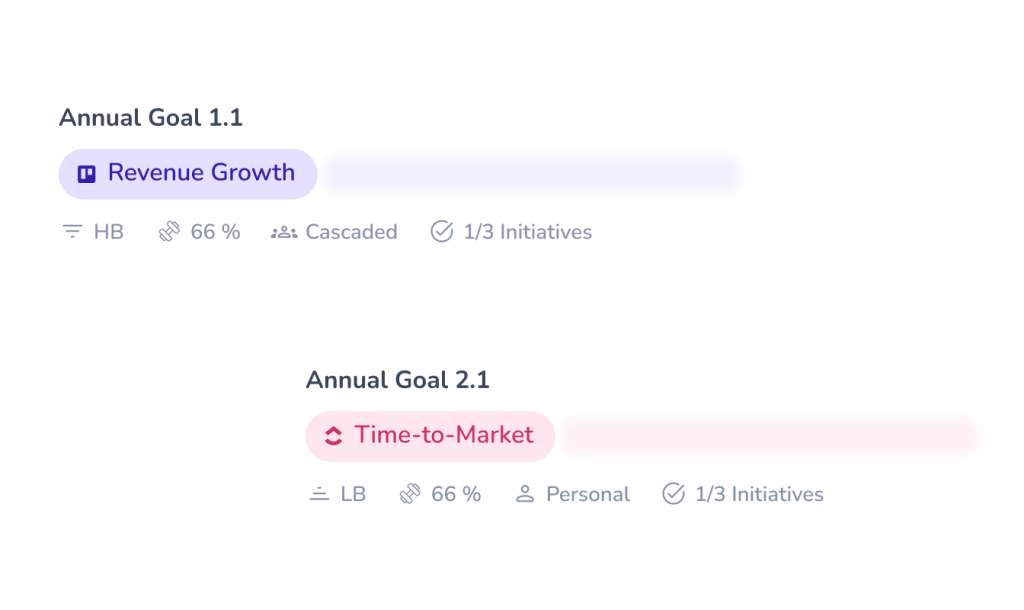
World’s first Single-Screen Talent Management System
that uniquely inverted myriad work flows into singular people flow

Agility for high performance
through quarterly or monthly goals and monthly or weekly initiatives respectively
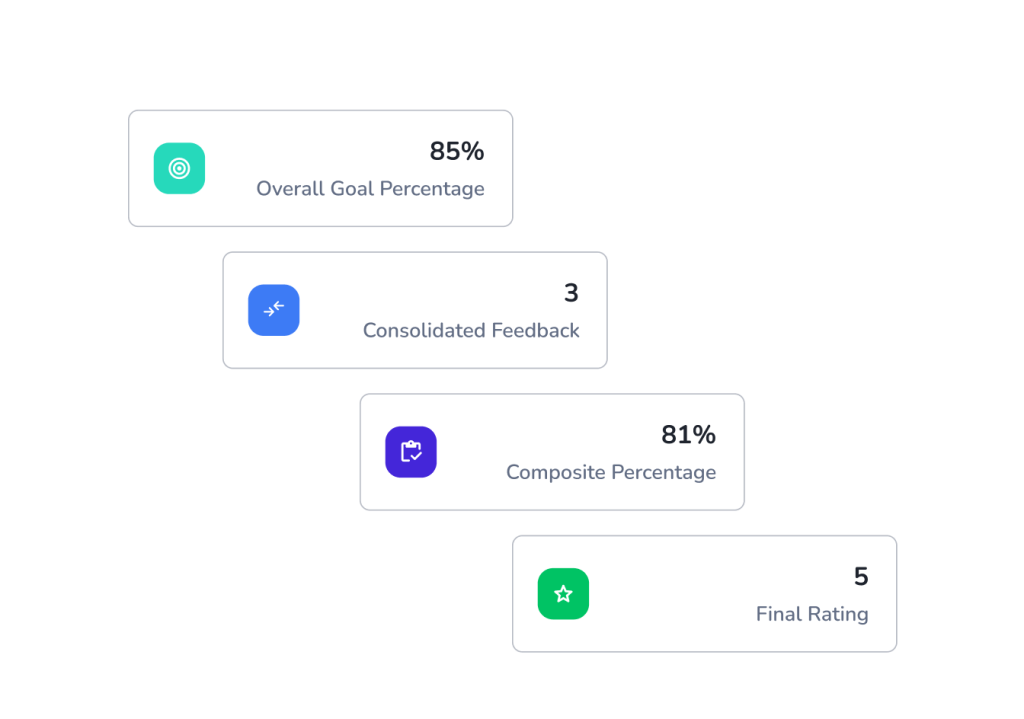
API automation & AI Everywhere
reduces typing by 85% through integrations and high-performance sentience (Science of WorkTM)
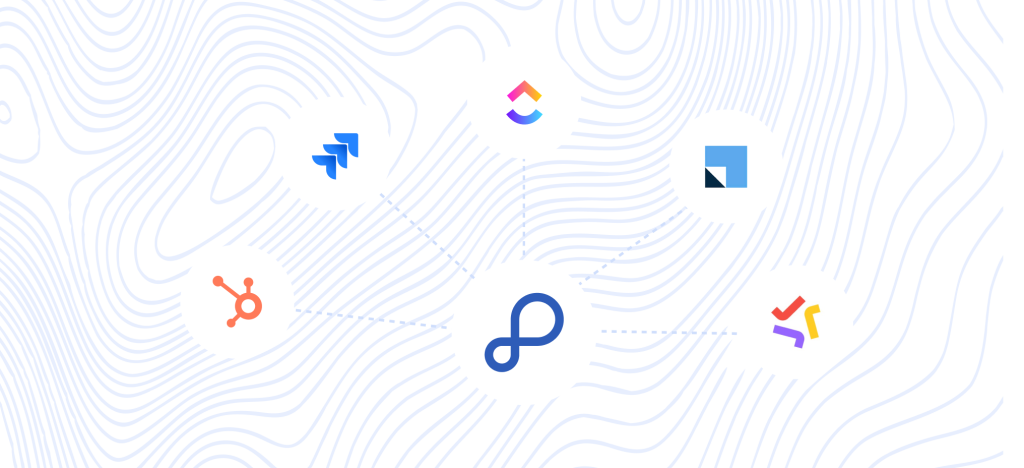
Global Partners for a Better HR Future






How it works

1 Prioritise org KPIs
Identify strategic objectives and prioritise the KPIs to
track

2 Interlink Skills
Analyze your existing skills and their linkage to the
org KPIs.

3 Accomplish
Finish the required setup that your employees will love to use and accomplish.
Globally recognized by outstanding clients







Why employees don't
adopt traditional PMSes
01
Missing link between Employee’s
skills
and organizational KPIs cascaded to him/ her
02
UI/ UX is complicated
further by the multiple screens & workflows such as goal set up, cascading, updation, feedback, IDPs, ratings, year end processes etc
03
Agility is low
as traditional PMSes are operated retrospectively for the year-end processes rather than for regular performance improvement
04
Data entry to PMS is onerous
especially if the Employee has to update the PMS in addition to updating the CRM/ ticketing/ operating software they already use
05
Good line Managers are not necessarily good People Managers
as they lack the coaching skills
Solution
What do we do differently?
Individual Employee skills are interlinked to org KPIs
across Goals, Feedback, IDPs & year-end work flows

World’s first Single-Screen Talent Management System
that uniquely inverted myriad work flows into singular people flow

Agility for high performance
through quarterly or monthly goals and monthly
or weekly initiatives respectively.

API automation & AI Everywhere
reduces typing by 85% through integrations and high-performance sentience
(Science of WorkTM)

Our Partners
Global partners for futuristic HR Tech






Integration
Seamless Integration with Your
Favorite Tools

Data Integrations
Bring key metrics and real-time updates into PossibleWorks with powerful API integrations.
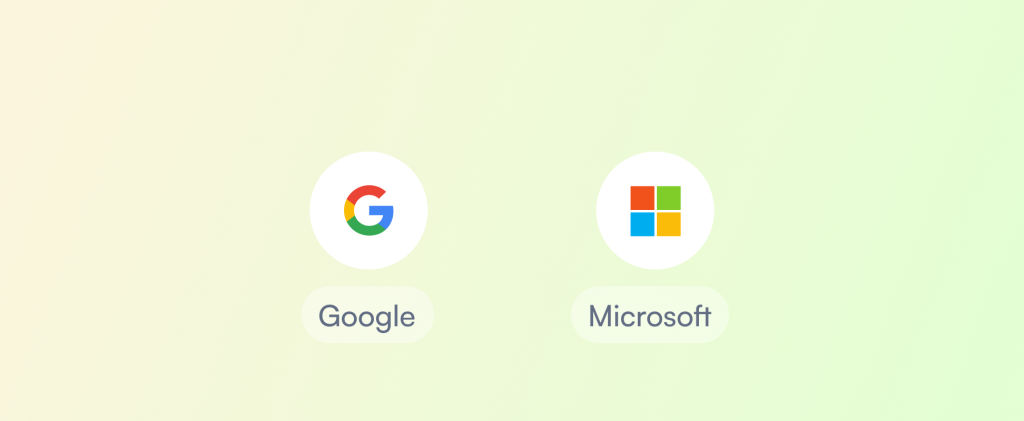
SSO Integrations
Simplify access with Single Sign-On for a secure, hassle-free login experience.

Comms Integrations
Manage goals and feedback directly from MS Teams.

Product Integrations
Bring essential metrics and real-time insights directly into your PMS with powerful product integrations
How it works
How do we do it better?

1 Prioritise org KPIs
Identify strategic objectives and prioritise the
KPIs to track

2 Interlink Skills
Analyze your existing org skills and their
linkage to the KPIs.

3 Accomplish
Finish the required setup that your employees
will love to use and accomplish.
Our Features
Performance Management reimagined
Our Features
Performance Management reimagined
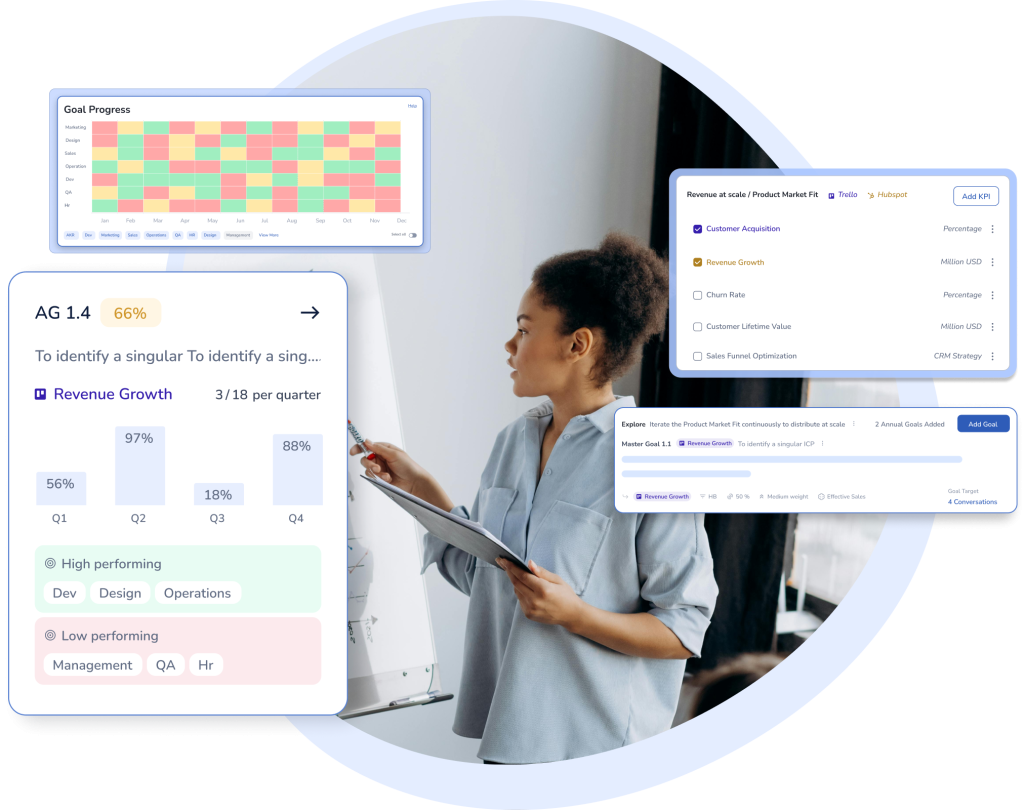

Data Integrations
Bring key metrics and real-time updates into PossibleWorks with powerful API integrations.

SSO Integrations
Simplify access with Single Sign-On for a secure, hassle-free login experience.
Optimize decision-making with automated workflows and
data-driven
insights, ensuring seamless business
operations.
Drive business outcomes with standardized KPI libraries
Free up time and resources to focus on high-value tasks
Eliminate repetitive data entry with fully automated processes
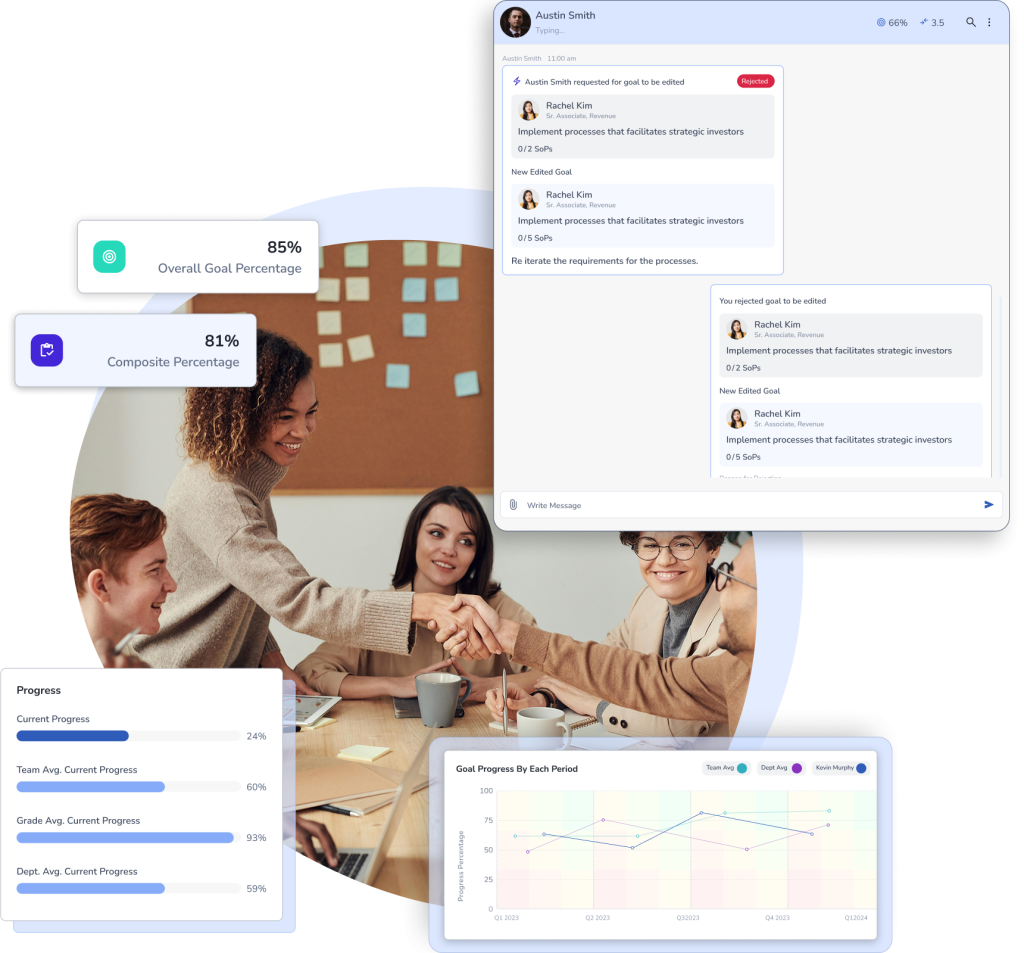
Redefining HR tech with intuitive design and seamless collaboration, making work effortless and more productive.
Imagine work tech flow as conversations
& commitments between co-workers in a single screen
Our design innovation enhances productivity & HR tech ROI
80% adoption boost with zero training

Enhance leadership with AI-powered insights, making management effortless and more effective.
Transform managers with smart nudges
Reduce manual input effort to just 1/7th for maximum efficiency
Boost productivity with AI-driven decision-making and workplace optimization

Streamline HR processes, eliminate manual work, and focus on what truly matters.
Replace spreadsheets and save 150+ man-days on goals, feedback, and appraisals
Find past performance data without lost files or XL searches
Automate reports and insights for faster, data-driven decisions

We ensure that only authorized users have access to the application through MFA and SSO
Audited and certified by SOC1, SOC2, and ISO 27001
Compliant with the European GDPR

Optimize decision-making with automated workflows and data-driven
insights, ensuring seamless business operations.
Drive business outcomes with standardized KPI libraries
Free up time and resources to focus on high-value tasks
Eliminate repetitive data entry with fully automated processes
Redefining HR tech with intuitive design and seamless collaboration, making
work effortless and more productive.
Imagine work tech flow as conversations & commitments
between co-workers in a single screen
Our design innovation enhances productivity & HR tech ROI
80% adoption boost with zero training


Enhance leadership with AI-powered insights, making management
effortless and more effective.
Transform managers with smart nudges
Reduce manual input effort to just 1/7th for maximum efficiency
Boost productivity with AI-driven decision-making and
workplace optimization
Streamline HR processes, eliminate manual work, and focus on what truly
matters.
Replace spreadsheets and save 150+ man-days on goals,
feedback, and appraisals
Find past performance data without lost files or XL searches
Automate reports and insights for faster, data-driven decisions


We ensure that only authorized users have access to the
application through MFA and SSO
Audited and certified by SOC1, SOC2, and ISO 27001
Compliant with the European GDPR
Check out how our PMS works!
Check out how our PMS works!
Testimonials
What our clients say about us
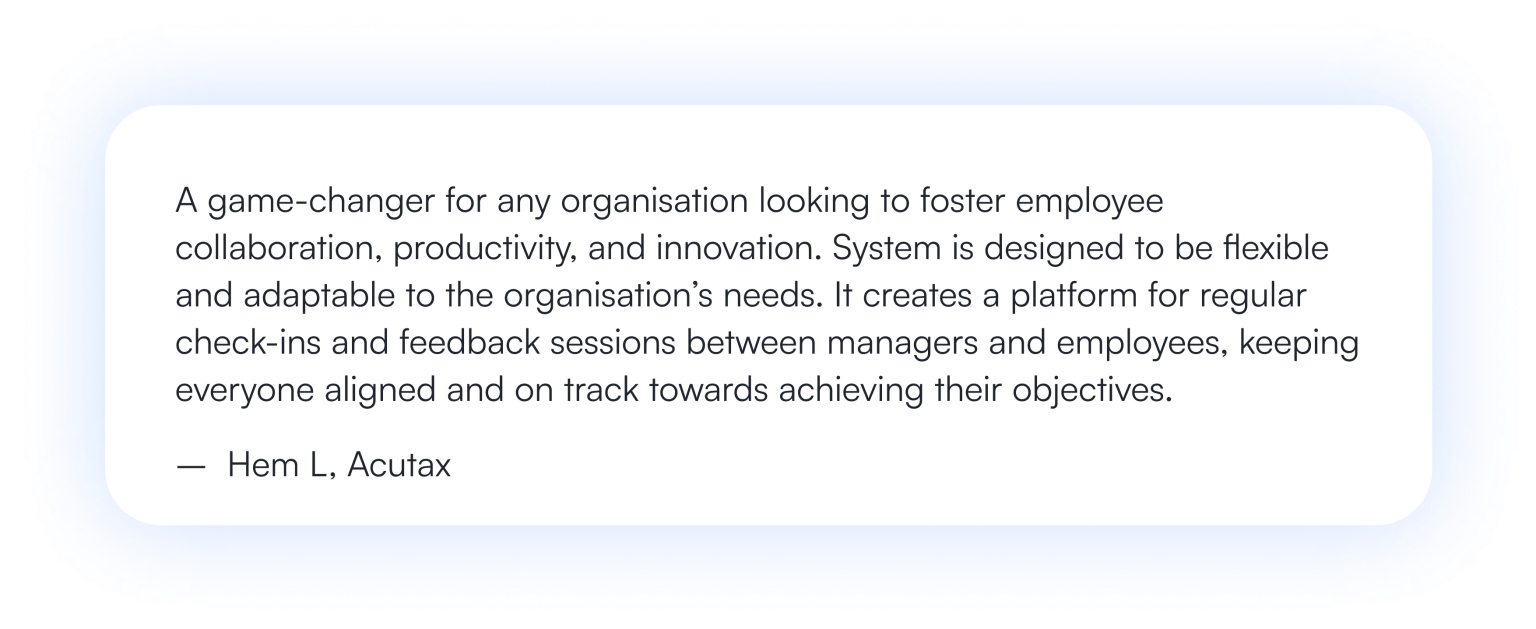
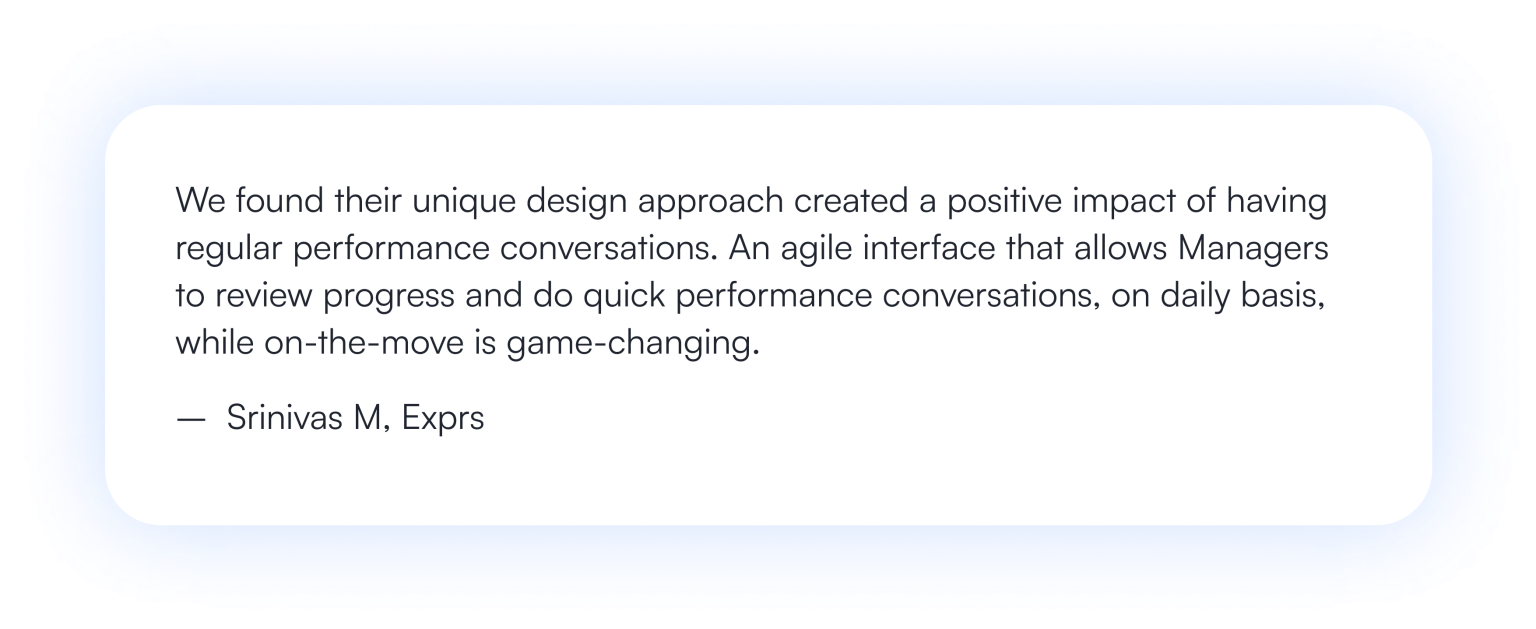
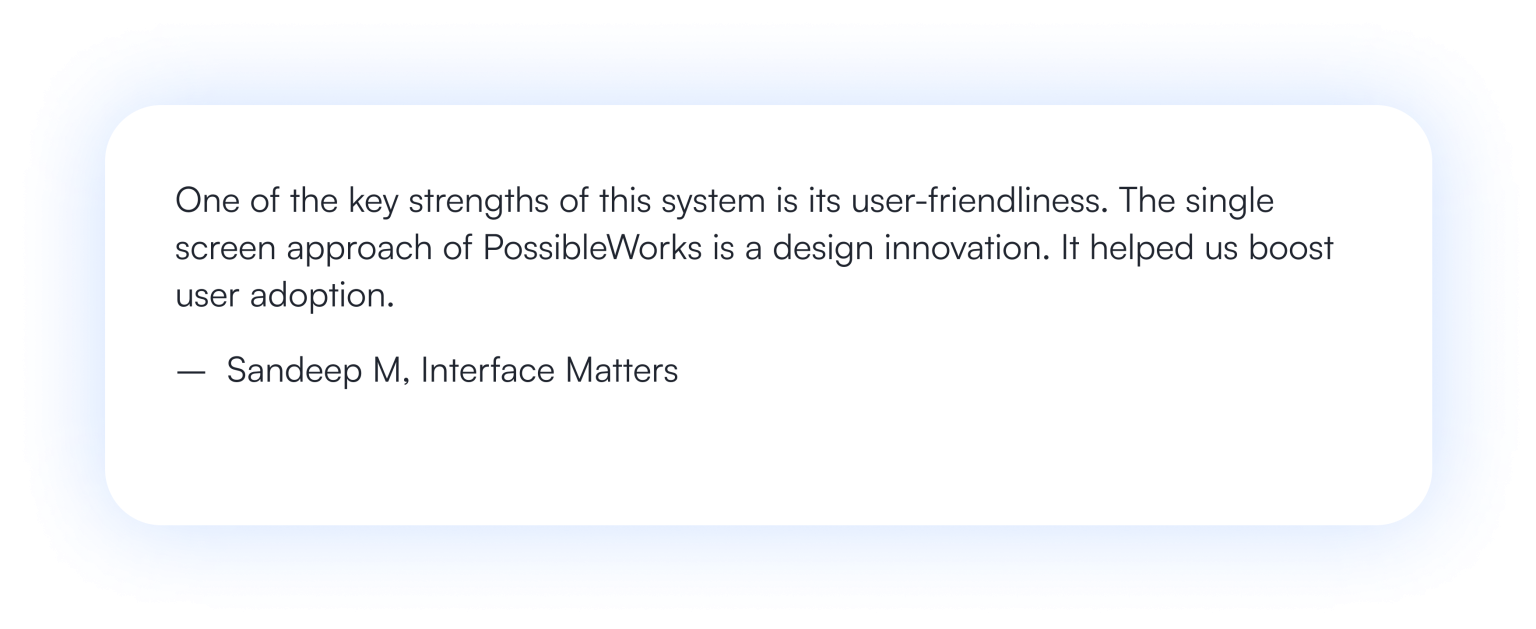
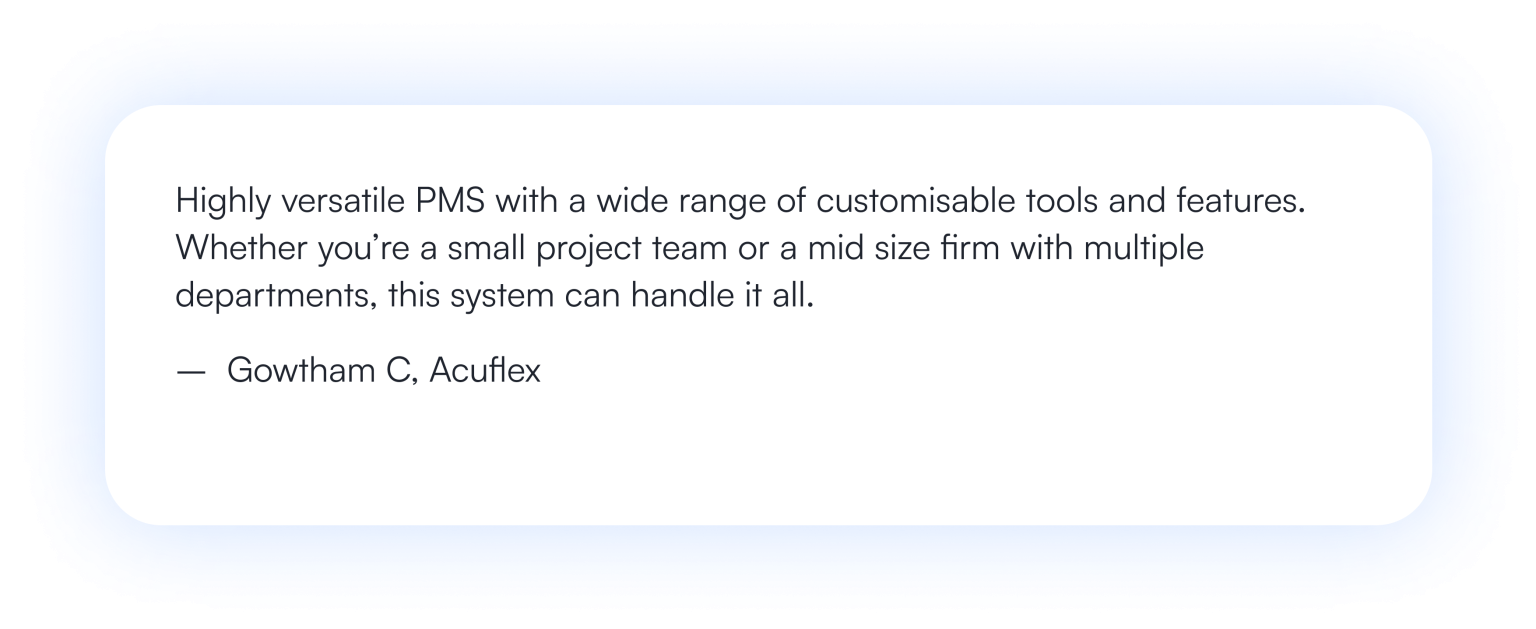
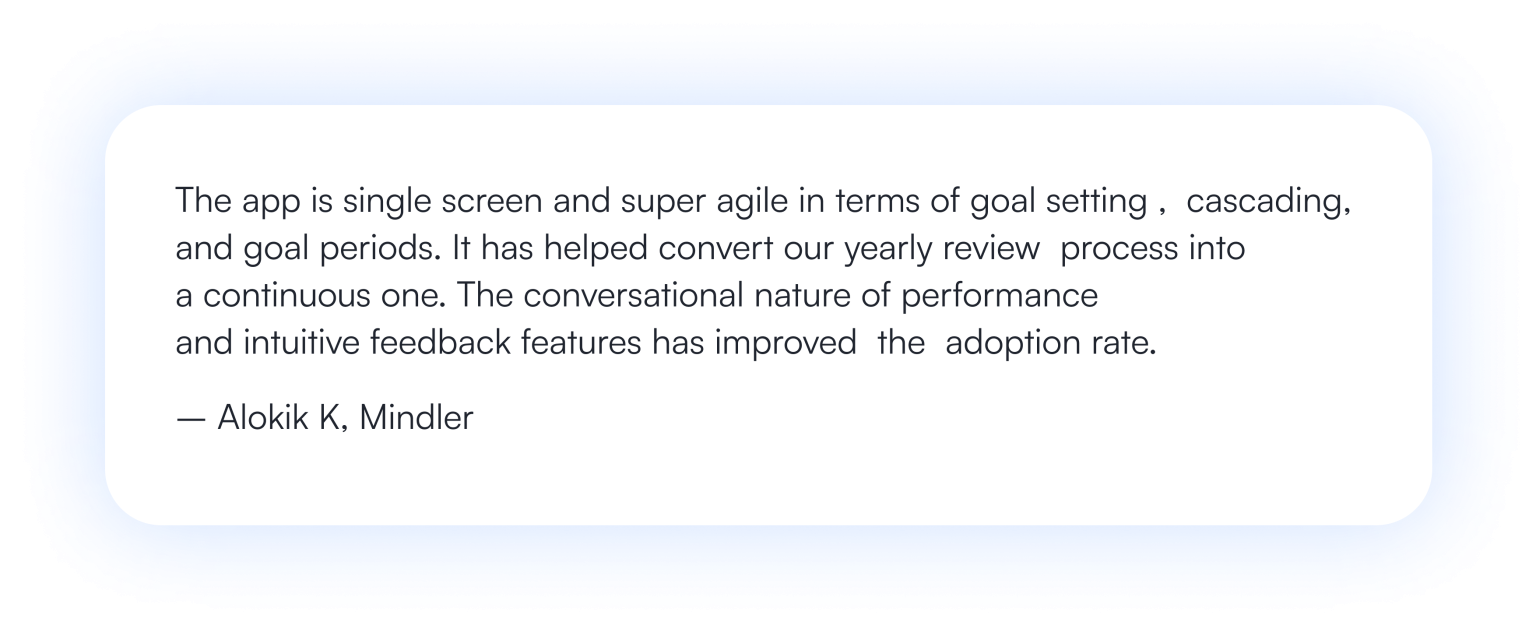
Testimonials
What our clients say about us
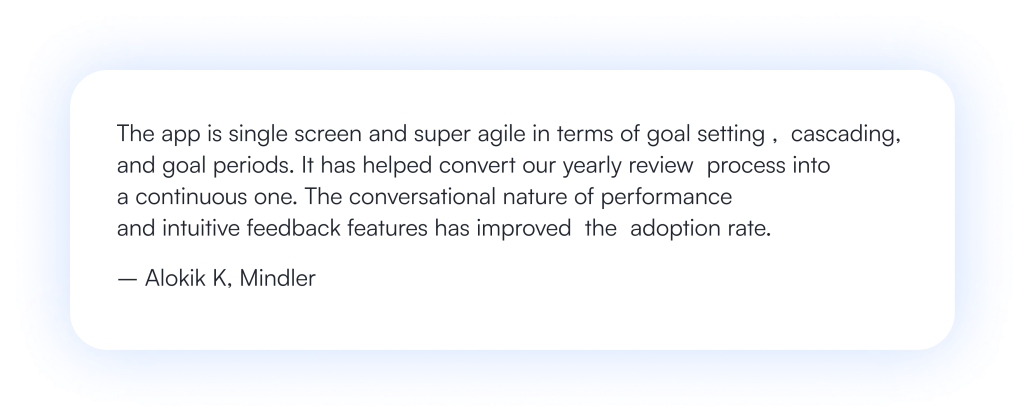
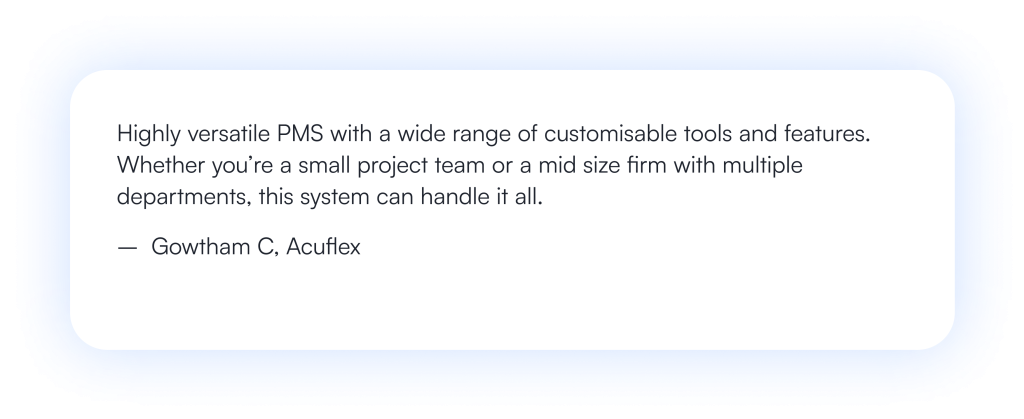
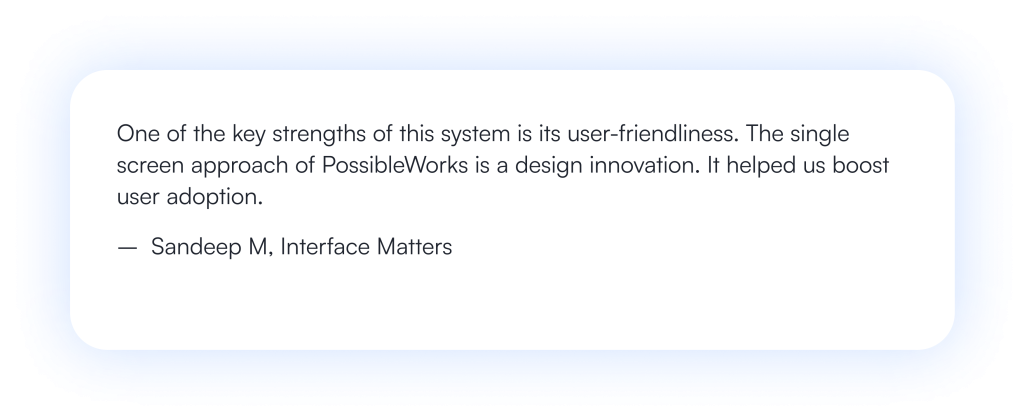
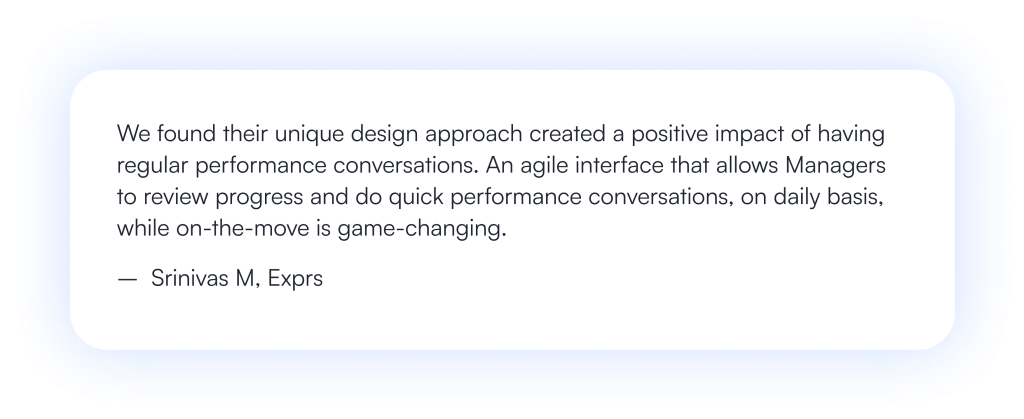
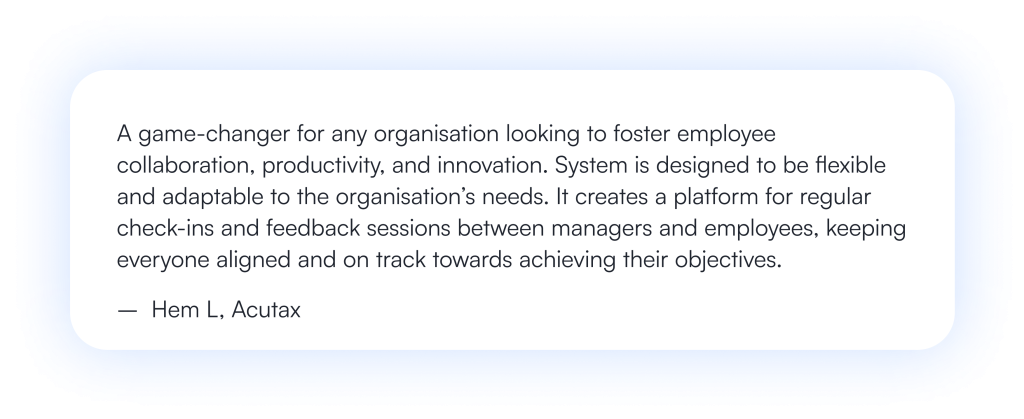
No more disgruntled employees at the year-end. Say goodbye to
year-end frustrations with real-time feedback, data-driven insights.

Struggling with outdated performance systems?
No more disgruntled employees at the year-end. Say goodbye to year-end frustrations with real-time feedback, data-driven insights.

Got questions? We’ve got answers
PossibleWorks is the world’s first skill-based, single-screen performance management platform. We uniquely embed organizational skill ontologies directly into goals, feedback, and performance workflows, thus extending skills beyond the traditional domains such as Talent Acquisition, Learning Management Systems.
Our conversational UI, powered by voice and chat, transforms fragmented workstreams into people-centric single screen interface. This intuitive design facilitates micro-feedback loops and goal updates, especially tailored for frontline and deskless teams.
Using proprietary AI algorithms, PossibleWorks reduces both the cognitive and manual typing loads to just one-seventh of what legacy systems demand, thus driving end-user adoption.
PossibleWorks supports a range of structured performance review types that focus on goal tracking, competency evaluation, and employee development. These reviews are designed to ensure that individual contributions are aligned with organizational objectives and can be configured to run on monthly, quarterly, bi-annual, or annual cycles based on your company’s needs. Review types include:
PossibleWorks goes beyond periodic reviews by enabling continuous, real-time feedback throughout the year. This feature supports timely recognition and correction by recommending Individual Development Programs at the end of each feedback and coaching, thus helping teams stay aligned and agile. Employees and managers can give feedback, document achievements, raise concerns, or offer praise. Feedback can be private, public, or part of structured conversations, making it a dynamic tool for engagement and improvement. By making feedback informal, PossibleWorks ensures a culture of ongoing growth and support rather than retrospective evaluation alone.
PossibleWorks can use the OKR (Objectives and Key Results) framework or BSC (Balanced Score Card) framework to support structured and transparent goal setting. Employees can set individual Key Results or Goals that are measurable, time-bound, and regularly tracked, ensuring continuous visibility into progress.
For alignment, the platform enables cascading goals that connect individual, team, and departmental objectives to broader company KPIs. This ensures everyone’s efforts are in sync with organizational priorities and creates a clear line of sight between day-to-day work (Initiatives) and strategic goals or key results.
Integrations connect PossibleWorks seamlessly with your existing HR systems (HRMS, HRIS, ATS, LMS, Payroll and many others), eliminating data silos and ensuring that all employee information is available in one centralized platform. This reduces manual data entry, minimizes errors, and saves valuable time. Thanks to AI-driven automation, integrations are easy to set up and maintain (from the front-end), allowing your HR workflows to become more efficient and streamlined. As a result, your organization gains faster access to accurate data, enabling better-informed decisions and boosting overall productivity.
PossibleWorks streamlines year-end evaluations by consolidating goal achievements, continuous feedback, IDPs and manager assessments into a unified dashboard. It also supports rating normalization, optionally, across teams to ensure fairness and consistency. Annual Increment and Promotion can be fully automated, by integrating with existing Payroll systems. By automating data aggregation and providing actionable insights, the platform enables objective, informed decisions on compensation, promotions, and development.
PossibleWorks is designed to be intuitive and user-friendly, requiring little to no formal training or user guides, which is one of the key benefits of the platform. Anyone who uses a chat application personally and at work (which includes nearly everyone) can adopt the system. To ensure a smooth start, we offer personalized onboarding sessions tailored to your unique processes to help configure the platform effectively. Additionally, you’ll have a dedicated account manager who acts as the ongoing point of contact for your HRBP/Admin, providing continuous support whenever needed. Our ticketing system operates under standard SLAs for the respective priority levels of end-user issues.
When selecting a PMS, consider factors like integration capabilities with your existing HRIS, the ability to align with your organization’s goals with employee skills, ease of use for employees and managers and resulting adoption of the system, scalability & product depth to support future growth, and the level of customization required to meet your unique needs. Additionally, it’s crucial to assess how the system supports continuous feedback and development, rather than just annual reviews.
Employee adoption can be accelerated through user-friendly interfaces, clear onboarding processes, and continuous training. Our Science Of Work framework permeates through our system by breaking down principles of atomic habits, deep work, OKRs, various effectiveness techniques. Our Science of Work also ensures leadership buy-in and that the system aligns with both individual and organizational goals. It involves on boarding employees in the process early on and provide consistent support to help them see the value of the system in improving their performance and career development.
To measure ROI, track improvements in employee performance quarter on quarter, also productivity, engagement, and retention after implementing the PMS. Our system also shows real-time analytics for rating improvements, IDPs and skill matrices. Additionally, you can assess how the system helps in goal achievement, reduces administrative time spent on manual performance reviews, and enhances decision-making with actionable insights. A well-implemented PMS should contribute to more efficient HR processes and support business objectives.
Got questions?
We’ve got answers
Individual skills play a critical role in driving an organization’s success. Each employee’s unique talents, expertise, and capabilities contribute to achieving broader organizational objectives. When individual skills are aligned with organizational goals, they help in improving efficiency, fostering innovation, and ensuring the effective execution of strategies. Organizations often invest in skill development through training programs and mentorship to ensure their workforce is empowered to meet challenges and align their contributions with the overall mission and vision of the organization. This synergy between individual skills and organizational goals ultimately leads to growth and success.
Effective strategy execution ensures that an organization achieves its goals by turning strategic plans into actionable results. CEO reporting plays a crucial role in this process by providing clear, high-level insights on progress, aligning teams with objectives, and driving accountability across the organization. Together, they enable informed decision-making and sustained organizational success.
An employee Performance Management System is a framework that helps organizations evaluate and improve employee performance. It involves setting clear goals, providing regular feedback, and measuring progress to align individual contributions with organizational objectives. This system fosters accountability, identifies development opportunities, and enhances overall productivity.
Aligning goals with strategy ensures that every effort within the organization contributes to its broader objectives. It fosters clarity, improves decision-making, enhances efficiency, and ensures teams are working cohesively toward common goals, ultimately driving the company’s success and growth.
When choosing Performance Management software, key factors include:
Evaluating these factors ensures you choose a solution that boosts productivity and aligns with your business objectives.
Traditional employee Performance Management systems often face challenges such as:
Modernizing these systems addresses these pain points and fosters a more efficient, transparent, and growth-oriented approach.
Have More Questions? Connect with Our Experts for Tailored Insights.
Have More Questions? Connect with Our Experts for Tailored Insights.